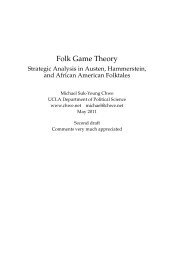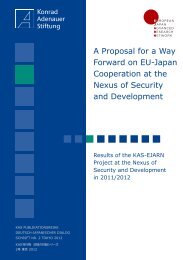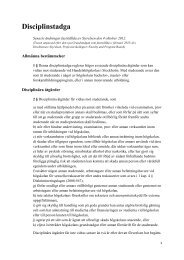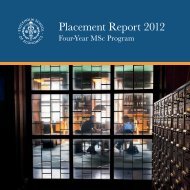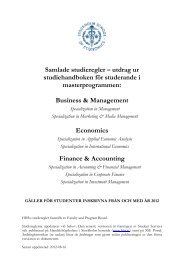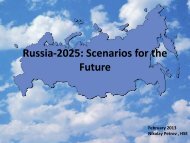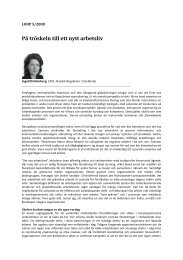Microfinance Banks and Household Access to Finance
Microfinance Banks and Household Access to Finance
Microfinance Banks and Household Access to Finance
- No tags were found...
Create successful ePaper yourself
Turn your PDF publications into a flip-book with our unique Google optimized e-Paper software.
estimate the location decision of ProCredit Bank. The dependent variable is thus D.ProCreditclose. In the second stage of our IV analysis we examine the volume effect by regressing ourindica<strong>to</strong>r of the change in bank account use (D.Account) on the predicted values ofD.ProCredit close derived from the first stage <strong>and</strong> individual household characteristics. 7As instruments in the first stage we use the 2010 PSU averages of Low Income, Informal,Female, Muslim as well as the variable Town close as indica<strong>to</strong>rs of the potential dem<strong>and</strong> forbank accounts in a region. The averages are calculated for each individual household as theaverage of the respective variable across all other households in the same PSU. The economicrationale behind these instruments follows from our model which suggests that the averagesocioeconomic conditions in a PSU should affect the location decision of the microfinancebank. As we use average PSU indica<strong>to</strong>rs for 2010 we account for the expected futureeconomic conditions in a region which should drive the banks location decision between 2006<strong>and</strong> 2010. At the same time we assume that the average socioeconomic structure of otherhouseholds in a region only indirectly affect the propensity of an individual household in thatPSU <strong>to</strong> open a bank account via their impact on ProCredit’s location decision.[Insert Table 8 here]Table 8 reports results of our IV estimation which we conduct separately for our twosubsamples of household-pairs: those pairs which are close <strong>to</strong> a retail bank (columns 1-2) <strong>and</strong>those which are not close <strong>to</strong> a retail bank (columns 3-4). The first-stage results reported incolumn (1) provide mixed support for a location effect. Considering only those locationswhich are close <strong>to</strong> a retail bank we find that ProCredit is more likely <strong>to</strong> open a new branch in7 We resort <strong>to</strong> estimating linear probability models because interpreting marginal effects of interaction terms innon-linear regressions is less straightforward (see Ai <strong>and</strong> Nor<strong>to</strong>n, 2003). Besides, the linear probability modelshould be a fairly good approximation as our interest primarily lies in the effects around the means of thedistributions of our main explana<strong>to</strong>ry variables (see Table 4 which shows that our distance cut-off of fivekilometres is relatively close <strong>to</strong> the mean of the continuous distance variables).22




